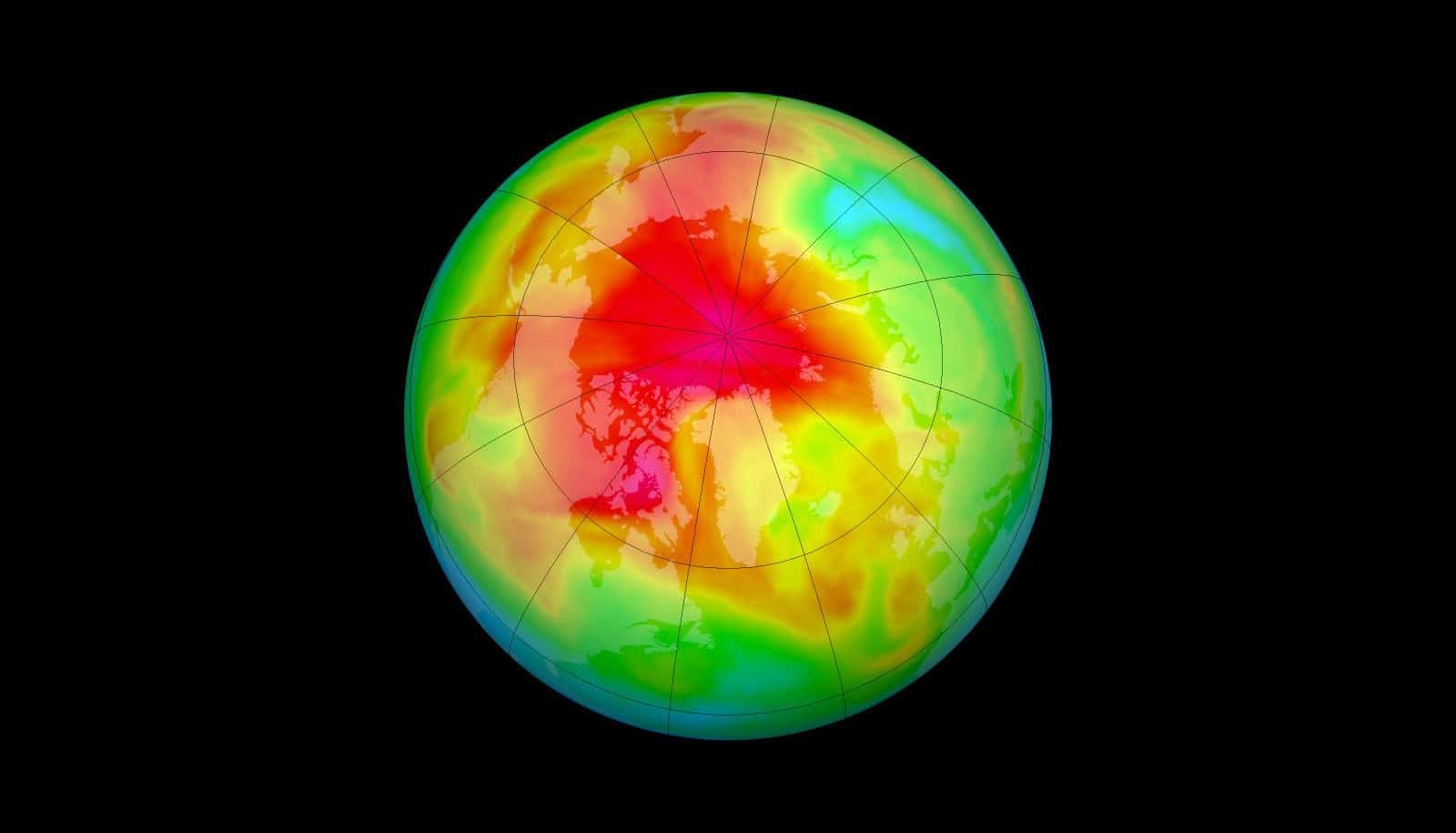
Ozone depletion over the North Pole produces weather anomalies, research indicates.
Many people are familiar with the hole in the ozone layer over Antarctica, but fewer know that the protective ozone in the stratosphere over the Arctic is occasionally destroyed as well, thinning the ozone layer there. This last happened in the spring of 2020, and before that, in the spring of 2011.
Each time the ozone layer has thinned out, climate researchers have then observed weather anomalies across the entire northern hemisphere.
In central and northern Europe, Russia and especially in Siberia, those spring seasons were exceptionally warm and dry. In other areas, such as polar regions, however, wet conditions prevailed. These weather anomalies were particularly pronounced in 2020.
Whether there is a causal relationship between stratospheric ozone destruction and the observed weather anomalies is a matter of debate in climate research. The polar vortex in the stratosphere, which forms in winter and decays in spring, also plays a role. Scientists who have studied the phenomenon so far have arrived at contradictory results and different conclusions.
New findings published in Nature Geoscience may clarify the situation.
To uncover a possible causal relationship, the researchers ran simulations that integrated ozone depletion into two different climate models. Most climate models consider only physical factors, not variations in stratospheric ozone levels, in part because this would require much more computing power.
But the new calculations make it clear: the cause of the weather anomalies observed in the northern hemisphere in 2011 and 2020 is mostly ozone depletion over the Arctic. The simulations the researchers ran with the two models largely coincided with observational data from those two years, as well as eight other such events that were used for comparison purposes. However, when the scientists “turned off” ozone destruction in the models, they could not reproduce those results.
“What surprised us most from a scientific point of view is that, even though the models we were using for the simulation are utterly different, they produced similar results,” says coauthor Gabriel Chiodo, a fellow at ETH Zurich’s Institute for Atmospheric and Climate Science.
The phenomenon as the researchers have now studied it begins with ozone depletion in the stratosphere. For ozone to be broken down there, temperatures in the Arctic must be very low. “Ozone destruction occurs only when it is cold enough and the polar vortex is strong in the stratosphere, about 30 to 50 kilometers above the ground,” points out doctoral student Marina Friedel.
Normally, ozone absorbs UV radiation emitted by the sun, thereby warming the stratosphere and helping to break down the polar vortex in spring. But if there is less ozone, the stratosphere cools and the vortex becomes stronger. “A strong polar vortex then produces the effects observed at the Earth’s surface,” Chiodo says. Ozone thus plays a major role in temperature and circulation changes around the North Pole.
The new findings could help climate researchers make more accurate seasonal weather and climate forecasts in future. This allows for better prediction of heat and temperature changes, “which is important for agriculture,” Chiodo says.
Friedel adds, “It will be interesting to observe and model the future evolution of the ozone layer.” This is because ozone depletion continues, even though ozone-depleting substances such as chlorofluorocarbons (CFCs) have been banned since 1989. CFCs are very long-lived and linger in the atmosphere for 50 to 100 years; their potential to cause ozone destruction lasts for decades after they have been taken out of circulation. “Yet CFC concentrations are steadily declining, and this raises the question of how quickly the ozone layer is recovering and how this will affect the climate system,” she says.
Source: ETH Zurich